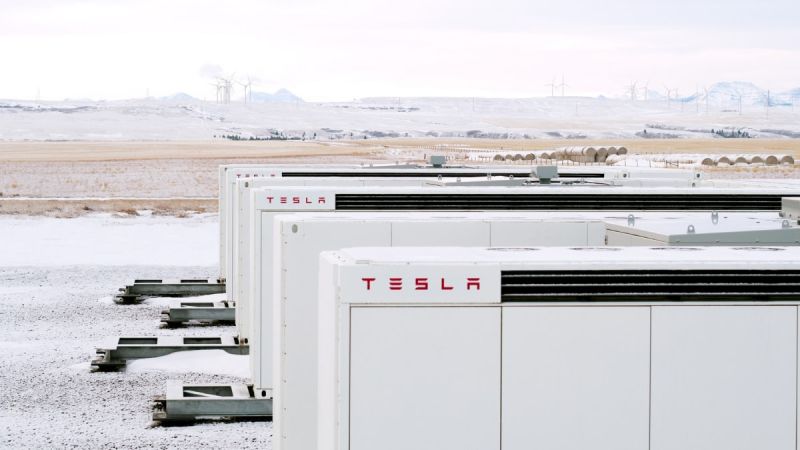As a reference we can see that according to the latest data from Tesla, in 2021 it managed to deliver "barely" 3.99 GWh of stationary batteries. A striking figure that represents an increase of 32% over the previous year, but still far from the expectations previously expressed by Elon Musk in different interviews.
A single TWh is basically equivalent to 1,000 GWh, a figure that clearly shows that last year Tesla barely managed to produce a fraction of energy as compared to its expectations. In order to overcome this situation Tesla is working on setting up a battery gigafactory specifically focused on backup solutions: plants that will be in charge of producing both the residential systems, Powerpacks, and the industrial-scale Megapacks.

A Tesla Powerpack is a rechargeable lithium-ion battery stationary energy storage product, intended for use by businesses or on smaller projects from power utilities. The device is manufactured by Tesla Energy, the clean energy subsidiary of Tesla, Inc. The Powerpack stores electricity for time of use load shifting, backup power, demand response, microgrids, renewable energy integration, frequency regulation, and voltage control.
As for the Tesla Megapack, it is large-scale rechargeable lithium-ion battery stationary energy storage product, intended for use at battery storage power stations. Launched in 2019, each Megapack can store up to 3 megawatt-hours (MWh) of electricity. Each Megapack is a container that is sized slightly under the size of the ISO intermodal container. Designed to be deployed by utility companies, Megapacks can be used to store energy generated by intermittent renewable power sources, such as solar and wind. The energy stored can be used by the grid as required, for example during periods of peak electricity demand.

But the big change that will speed up production, and at the same time lower prices, will be the change that Tesla is preparing in the composition of the batteries themselves. Right now all these batteries use the same cells as the vehicle division: Model Y, Model 3, Model X, etc. But the requirements of the backup systems are different, and that is the reason why Tesla last year started to replace the cells in the Megapacks, which have changed to LFP (Lithium Iron Phosphate); all of which will allow Tesla to avoid the use of expensive and scarce materials like nickel and cobalt.
Tesla Hints At Transition Of All Energy Storage To LFP Batteries https://t.co/QxR8TG9wd0 via @insideevs.com
— InsideEVs (@InsideEVs) January 27, 2022
According to Musk, “... There is a ridiculous amount of iron in the earth, and there is also a ridiculous amount of lithium. So we really expect all stationary storage to become iron over time. And manganese is like a wild card.”
Musk has also confirmed that the lack of materials due to the problems caused by the pandemic meant a prioritization of resources towards the automobile division. Something that will now change with an increase in investment and production in backup batteries, which they hope will allow them to pave the way for a production of Terawatt-hours a year.
All images courtesy of Tesla Inc.
Nico Caballero is the VP of Finance of Cogency Power, specializing in solar energy. He also holds a Diploma in Electric Cars from Delft University of Technology in the Netherlands, and enjoys doing research about Tesla and EV batteries. He can be reached at @NicoTorqueNews on Twitter. Nico covers Tesla and electric vehicle latest happenings at Torque News.











